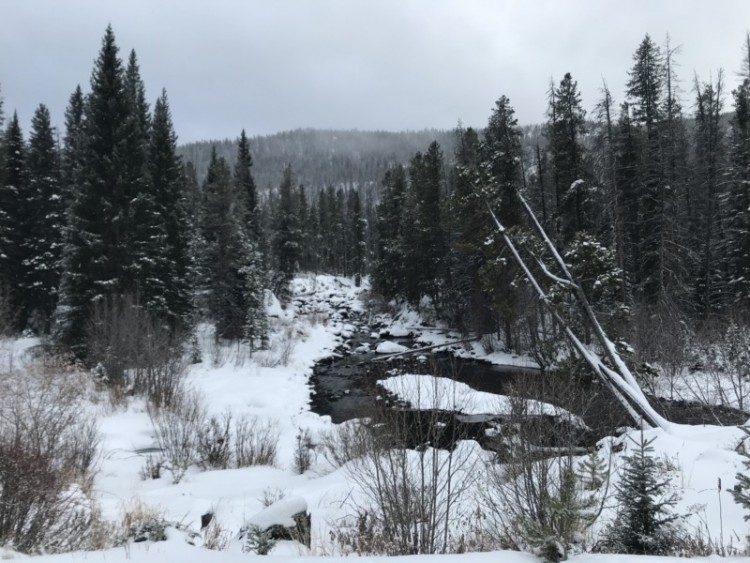It’s impeccable what nature can do for human health. The Nature Fix by Florence Williams, published by W.W. Norton & Company in 2017, provides the most compelling argument to date for people to spend more time outdoors in nature. Furthermore, the case is based on increasing biological, psychological, and medicinal scientific evidence.
Over the years, humans have made efforts to quantify nature’s impact on mood, well-being, ability to think (remember, plan, create), and sociability. Now we have an answer. The “biophilic” hypothesis, mentioned in the book, involves lowering human stress, boosting mental health, and restoring attention, empathy, and cognitive clarity.
Additionally, nature also carries a social component. There is a feeling shared among people who spend time together outdoors. Nature brings us together during times of quiet and disaster. One such example is people who perform exceeding acts of kindness in the aftermath of a severe environmental event such as a tornado, earthquake, or firestorm.
Some of the links in this article may contain affiliate links. When you make a purchase using these links, part of the proceeds go to Snowshoe Mag. Additionally, as an Amazon Associate, we earn from qualifying purchases. Please see our disclosure for more details.
The Prescription For Nature
In The Nature Fix, the recommended prescription for getting outdoors is a “nature pyramid.” It includes both quick doses and longer spells in wild places. Specifically, humans should:
-
Get out in nature nearby daily for some minutes to de-stress, find focus, and lighten mental fatigue (listed at the bottom of the pyramid)
-
Spend weekly outings at parks or waterways for an hour or so
-
Go on monthly weekend excursions to natural areas to bolster immune systems
-
Embark on annual or biyearly multi-day wilderness trips (listed at the top of the pyramid)
More significantly, such wilderness experiences are invaluable for adolescents or those in grief or suffering trauma.
Nature Fixes Around The World
While completing our book review of The Nature Fix, we learned the author traveled the world to investigate and experience research on nature’s impact on humans.
In Japan, she saw “forest bathing” on a sensory walk in the woods. The bathing was on one of the 48 forest therapy trails in the country. Similarly, in Scotland, they call it “ecotherapy.”
In Korea, she met with a professor of “social forestry,” who introduced her to the world’s only college degree for forest healing. Ironically, in South Korea, from 2010-2013, visits to the forest increased from 9.4 million to 12.7 million. Meanwhile, in the USA, there was a decline of 25% during the same period.
In Finland, 95 percent of the population spends time recreating outdoors, and 50 percent ride bicycles. It is easy to access forests because trees cover 74 percent of the country. Furthermore, there are two million summer cottages for a population of two million Finns. They claim the focus on nature correlates to reduced health care costs and mental and physical fitness.
The author also visited Singapore, where 70 percent of the population lives within 400 meters of green space. The government in Singapore allocates 0.6 percent of the national budget to develop scenery and greenery.
Read More: Humber Arboretum: Nature In The Heart Of Canada’s Largest Urban Centre

Over 3/4 of Finland includes forests, and 95% of the population accesses the outdoors. Photo: Ekaterina Kondratova via Shutterstock
The Evidence of Nature’s Impact
As you read and review the book, The Nature Fix, the evidence is apparent. The evidence (20 pages of cited notes and credits) about nature’s impact involves cortisol levels, sympathetic nerve activity, heart rate decline, and hemoglobin in the brain’s prefrontal cortex. The book is replete with that type of information, which may be news to most people who may not be familiar with such neurological details.
Noted in the book, one of nature’s benefits is delivered through sound—a babbling brook, bird tweets in the early morning, the leaves moving in the wind, and so on. But the U.S. Park Service claims that 83% of land in the lower 48 states sits within 3,500 feet of a road and that within 20 years, 90 percent of the population will be close enough to hear at least one of the projected 30,000 airplane flights per day.
This statistic stresses the importance of finding our outdoor haven, where we can indeed hear that stream, feel the breeze, and experience the full benefits of nature.
Read More: Snowshoeing Visualization & Coping With Cancer

Smelling flowers, in this case, lupines in the White Mountains, stimulates the senses and is one benefit of nature. Photo: Roger Lohr
Impacts on Mental Health
There are also successful nature programs to help people with PTSD (post-traumatic stress disorder) and ADHD (attention deficit hyperactivity disorder). Outward Bound studied a therapeutic adventure program showing the improvement of 9-19 percent of participating veterans who had PTSD. The author of The Nature Fix, Florence Williams, also discusses ADHD programs with diagnoses of 6.4 million kids, and half of them are taking medication for the issue.
Isn’t it about time that more therapists, doctors, teachers, and parents prescribe getting outdoors more often?
You can purchase The Nature Fix on Bookshop.org or Amazon and learn about the author Florence Williams on her website.
What benefits have you experienced from nature? Have you read or reviewed the book, The Nature Fix? Let us know in the comments below!
This article was originally published on Oct 14, 2018. Susan Wowk most recently updated it on April 6, 2023.
Read Next:
Snowshoeing Saved My Life
Reap the Health Benefits of Snowshoeing
Winter Recreation Therapy For Injured U.S. Veterans
Winter-spiration Book List









Leave a Comment